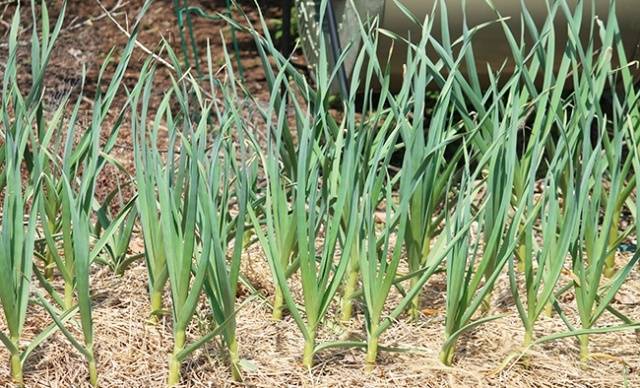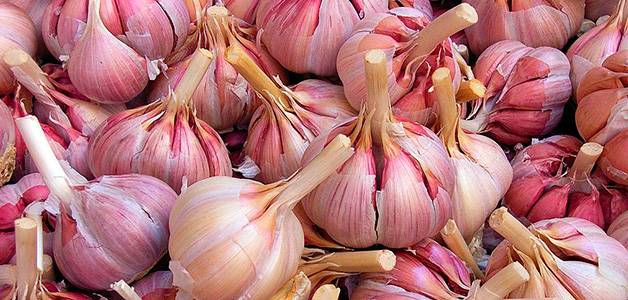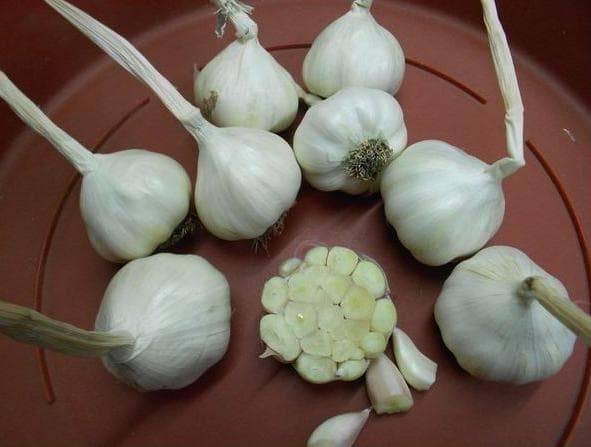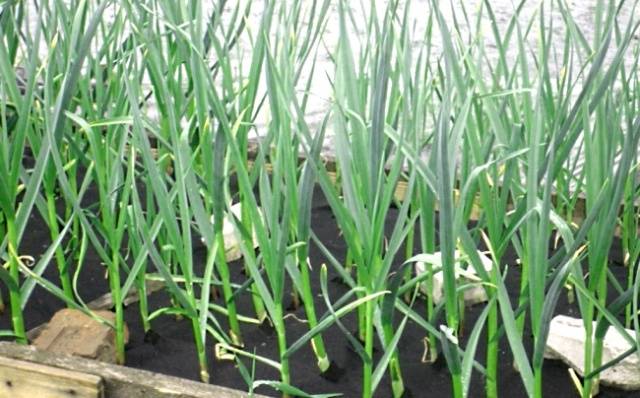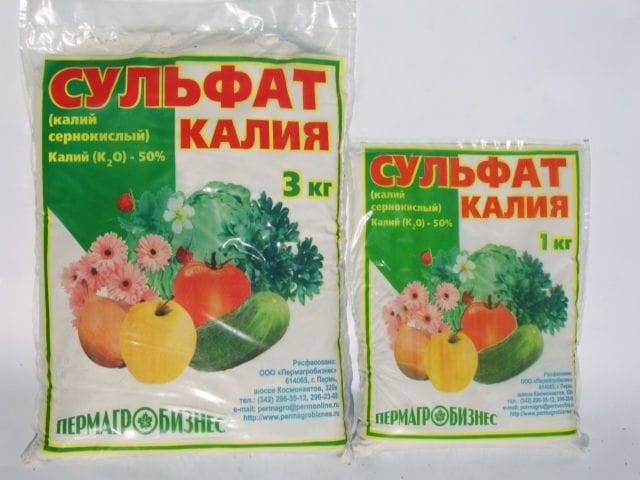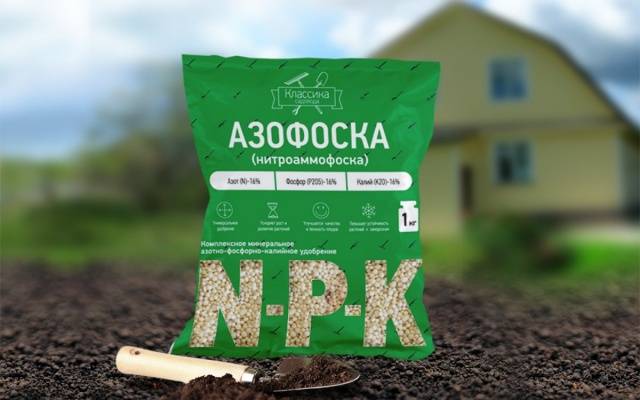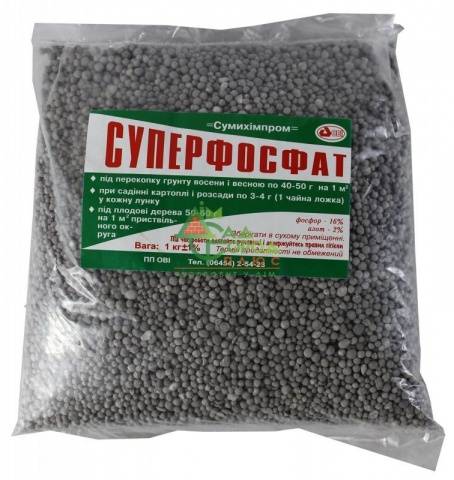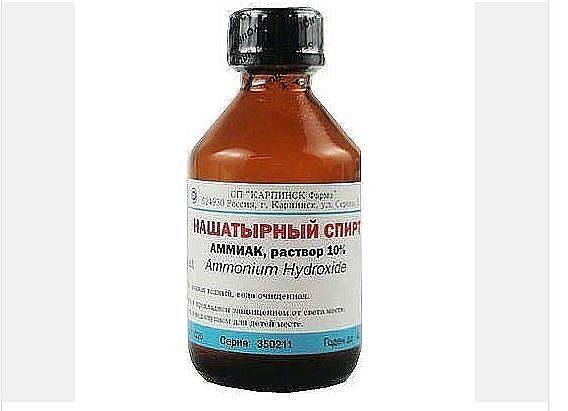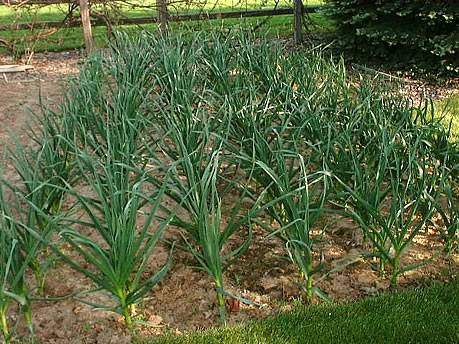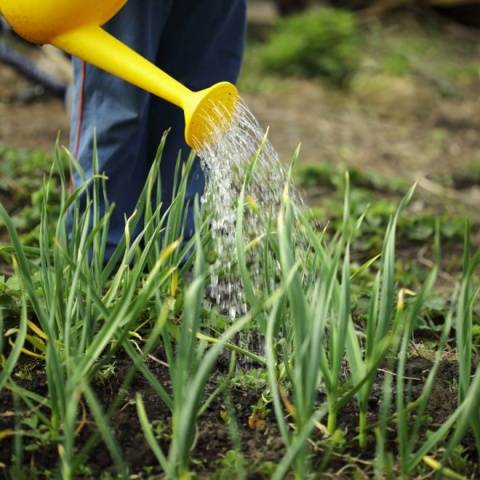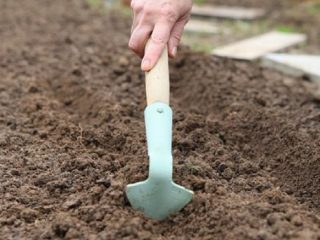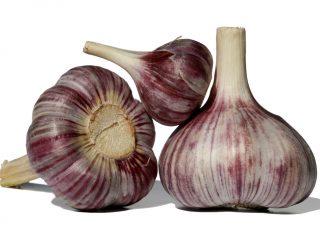Content
Growing garlic is a fairly simple matter, so gardeners do not always pay due attention to it. Although with the right approach and application of fertilizers, you can grow a crop that is not comparable to that which is obtained when the garlic is left to itself. This is especially well known to those who practice the cultivation of this plant for sale. Indeed, with proper and timely feeding, you can get almost twice the amount of garlic.
The bigger problem is sometimes the answer to the question: which fertilizer for garlic to choose in order to get the most out of it and not harm it? After all, it must be remembered that garlic is a culture very sensitive to the concentration of mineral salts in the soil, therefore it is by no means possible to apply high doses of mineral fertilizers at a time. Therefore, at dressing garlic it is necessary to approach the implementation of this procedure in an integrated manner, using, if possible, various types of fertilizers at different periods of development.
Varieties of garlic
To choose the right timing for dressing garlic, you need to take into account all the features of its growth and development.
Winter garlic is usually distinguished by early maturity (the growing season is from 80 to 120 days), good yield (up to 1.5 kg per square meter), but it is not stored for long. It is usually grown for consumption in the fall and early winter. The bulbs and cloves themselves in winter varieties are often large (the weight of the bulb can reach 50-60 g), there are few cloves in the bulb (on average 4-9 pieces). All the cloves are located around the stem, which is in the center of the bulb.
Spring garlic has small onions (20-30 grams), there can be much more cloves in the onion (from 15 to 30 pieces), there is no core in the middle. Spring varieties are usually late-ripening (the growing season is 80-150 days), less productive (0.5-0.8 kg per 1 square meter), but they are well stored until spring, and sometimes even until the next harvest.
Winter garlic, according to its name, is planted in autumn, before winter, and spring garlic - in spring. Hence the difference in the timing of their feeding.
The exactingness of garlic to soil
For both winter and spring garlic, choosing the right soil for growing is very important.
- For both varieties, the soil should be fertile with or near neutral reaction. Garlic does not like acidic soils.
- Winter varieties prefer sandy loam soils, while light and medium loamy soils are most suitable for spring varieties. Spring varieties of garlic feel quite good even on light alkaline soils.
- For garlic, areas with a high level of groundwater or depressions in the relief with the possibility of flooding are of little use.
- The best precursors for garlic in the garden are legumes, cucumbers, cabbage, and potatoes.
Mineral dressing of garlic
When planting garlic in the fall before winter, it is necessary that the planting material forms a good root system, but the active growth of the aerial leaf part does not begin. Typically, garlic beds are fertilized in the fall with organic fertilization a few weeks before planting. Most often, compost or humus (rotted manure) is used for these purposes, since their effect on plants is not so fast, but longer in time. For each square meter of planting, about one bucket of organic matter is introduced.
Together with organic matter, it is very important to add superphosphate and potassium sulfate to the soil for the beds before planting garlic. The following fertilization rates are recommended:
1 tablespoon of superphosphate and 0.5 tablespoon of potassium sulfate per square meter of planting.
This amount is quite enough for the plants to take root well and survive the winter safely. It is in order that the leaves of garlic do not grow intensively, nitrogen fertilizers are not specially applied for winter.
But in the spring - a completely different matter. Even before the final snow melts, the first sprouts of winter garlic usually appear from the ground. As soon as the shoots reach 10-12 cm in length, the first garlic dressing is performed in the spring. Since at this moment fertilizing is used for intensive plant growth, mineral fertilizers containing nitrogen are most often used: urea or ammonium nitrate.
Dissolve one tablespoon in a 10 liter bucket of water. One bucket is usually enough for watering 5 square meters. meters of landings. In early spring, when there is an excess of moisture, fertilizing is usually carried out instead of watering, so that the roots of the plants do not have an excess of moisture. If the spring is warm and dry, then before feeding the garlic beds must be spilled with water.
The second top dressing is traditionally carried out 10-15 days after the first, which is for winter crops, which is for spring varieties.
For its implementation, it is advisable to use any complex fertilizer. Most often, nitroammophoska is used for these purposes, which contains all three main nutrients (nitrogen, phosphorus, potassium) in equal proportions. It is usually bred in the following proportions: 2 tablespoons of fertilizer are diluted in water, with a volume of 10 liters, and water the garlic bed, spending this volume on 3-5 square meters of land.
Experienced gardeners advise to carry out the third dressing of garlic a few weeks before the moment when the leaves begin to dry out. Usually it is produced somewhere in the middle or the end of June, depending on the type of garlic: winter varieties - earlier, and spring varieties - later.
For these purposes, a superphosphate solution is most often used. In 10 liters of water, 2 tablespoons of fertilizer are diluted and watered with the resulting solution of the beds with plants.
It is important to clearly guess the timing of the third feeding, which is responsible precisely for the growth of the bulbs themselves. If you are late with it, then the leaves will begin to dry out and there will be practically no sense from it; if it is carried out too early, all its power can go into the leaves, and not into the bulbs. It is best to focus on the size of the leaves - if they have reached their maximum size, then you can feed them.
Organic fertilizing
Garlic is very fond of organic matter, so it usually responds well to feeding with natural fertilizers. Immediately after the winter cold, the sprouts of winter varieties can be treated with diluted slurry.
Dilute it in a ratio of 1:10 and water the plants near the roots, trying not to hurt the leaves, in order to avoid burns. If you want to add other nutrients, you can sprinkle the soil around the garlic bushes with wood ash and sprinkle it with water on top.
You can also spill garlic plants several more times per season with an ash solution. For its preparation, 2 liters of ash are diluted in a 10-liter watering can and the plants are watered instead of water at the root.
Used for feeding this plant and a solution of chicken droppings, but very carefully. It is diluted in a ratio of 1:15 and when watering, make sure that the solution does not get on the leaves.
When answering the question: "What are the best fertilizers for garlic?" it is important to remember that it all depends on the timing of the feeding and the specific situation with the plants.
In addition, mineral fertilizers act quickly, but they are easier to harm sensitive garlic if you accidentally overdo it. Perhaps ash is the only fertilizer that is not capable of harming plants, but it does not contain nitrogen and in early spring it is still desirable to use something else containing nitrogen. Of the so-called folk remedies, ammonia is well suited, the use of which may well replace urea. If you dilute 2 tablespoons of ammonia in 10 liters of water, then this solution can be either watered or sprayed with garlic beds.
Foliar dressing
When any fertilizer is diluted in water and used to spray the plants, it is called foliar dressing. They are very effective in unfavorable weather conditions when the roots have difficulty absorbing food from the soil. Foliar dressing of garlic allows you to feed the plants through the leaves. This is the fastest way to help plants with a lack of a particular nutrient, because through the leaves, garlic, like any plants, absorbs nutrients several times faster than through the roots.
For some reason, foliar dressing for garlic is not very common, but for "ambulance" plants, for example, when the leaves turn yellow, they can do a good job. Most often, for foliar feeding of garlic, the same solutions are used as for watering, but only diluted three or even four times.
If the weather is calm and cloudy outside, then spraying the leaves can be carried out at any time of the day. But in sunny weather, it can only be done early in the morning or in the evening after sunset, so that the leaves do not receive additional burns.
Conclusion
It is important to remember that underfeeding is always better than overfeeding garlic. Top dressing is definitely needed on poor, depleted soils, under adverse weather conditions. In all other cases, it is necessary to closely monitor the condition of the plants and if the garlic grows well and develops quickly, then the next feeding can be postponed.
